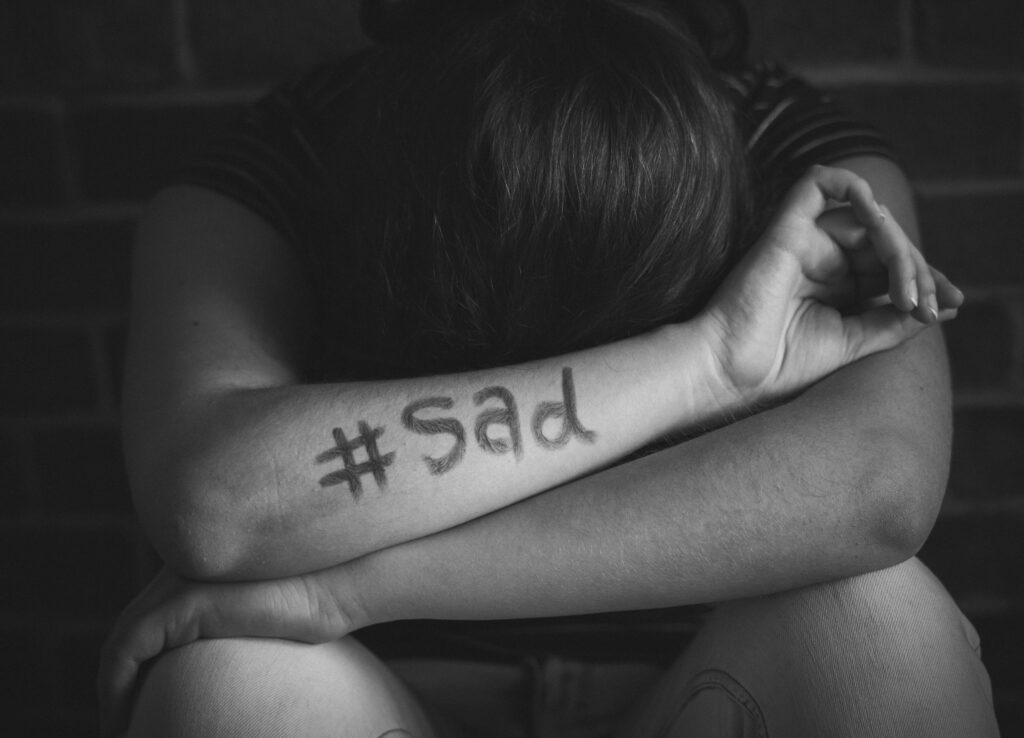Empowering Adolescents: Understanding Youth Suicide and Mental Health Education
Empowering Adolescents: Understanding Youth Suicide and Mental Health Education
Read Disclaimer
Empower adolescents by understanding youth suicide and implementing comprehensive mental health education. Learn about risk factors, support systems, coping strategies, and the role of peer advocacy.
Introduction:
Adolescence is a pivotal period of transition marked by numerous physical, emotional, and social changes. While this phase is often associated with growth and self-discovery, it also presents significant challenges, particularly concerning mental health. Suicide among adolescents is a pressing concern worldwide, highlighting the critical need for effective mental health education and support systems. Empowering adolescents with the knowledge and resources to understand and address mental health issues is paramount in preventing tragedies and fostering well-being. This article delves into the intricacies of youth suicide and the importance of mental health education in empowering adolescents.

Understanding Youth Suicide:
Youth suicide is a complex and multifaceted issue influenced by various factors, including psychological, social, and environmental elements. Adolescents facing mental health challenges such as depression, anxiety, and substance abuse are at a heightened risk of suicidal thoughts and behaviors. Additionally, experiences of bullying, trauma, familial conflicts, and societal pressures can exacerbate feelings of hopelessness and isolation, further contributing to suicidal ideation.
According to the World Health Organization (WHO), suicide is the fourth leading cause of death among individuals aged 15 to 19 years globally. Alarmingly, suicide rates among adolescents have been on the rise in many countries, underscoring the urgent need for preventive measures and intervention strategies.
One of the critical aspects of addressing youth suicide is recognizing the warning signs and risk factors. These may include sudden changes in behavior, withdrawal from social activities, expressions of despair or worthlessness, substance abuse, and giving away prized possessions. By understanding these indicators, parents, educators, and peers can intervene early and provide the necessary support and intervention.
Mental Health Education: A Crucial Intervention:
Effective mental health education plays a pivotal role in equipping adolescents with the knowledge, skills, and support networks necessary to navigate the challenges they face. Integrating comprehensive mental health education into school curricula is essential in promoting awareness, reducing stigma, and fostering early intervention.
First and foremost, mental health education should encompass a wide range of topics, including stress management, emotional regulation, coping strategies, and interpersonal skills. By providing adolescents with practical tools to manage their emotions and navigate difficult situations, they can develop resilience and better cope with the pressures of adolescence.
Moreover, mental health education should address the stigma surrounding mental illness, promoting empathy, understanding, and acceptance. Creating a safe and supportive environment where students feel comfortable discussing their feelings and seeking help is crucial in breaking down barriers to mental health care.
In addition to classroom-based education, schools should implement comprehensive mental health support systems that provide access to counselors, psychologists, and other mental health professionals. These professionals play a vital role in identifying at-risk students, providing counseling services, and facilitating referrals to appropriate mental health resources in the community.
Furthermore, parents and caregivers play a crucial role in supporting adolescent mental health. Providing open communication channels, offering unconditional support, and modeling healthy behaviors are essential in promoting positive mental well-being within the family unit.

The Role of Peer Support and Youth Advocacy:
Peer support programs and youth advocacy initiatives are powerful tools in promoting mental health awareness and resilience among adolescents. Peer support groups provide a safe space for young people to share their experiences, seek advice, and receive support from their peers who may be facing similar challenges.
Moreover, youth advocacy programs empower adolescents to become agents of change in their communities by raising awareness about mental health issues, advocating for policy changes, and promoting access to mental health services. Engaging adolescents in advocacy efforts not only amplifies their voices but also fosters a sense of empowerment and ownership over their mental health and well-being.
Challenges and Future Directions:
While progress has been made in advancing mental health education and support services for adolescents, significant challenges remain. Limited resources, stigma, and cultural barriers continue to impede access to mental health care for many young people worldwide. Addressing these challenges requires a concerted effort from policymakers, educators, healthcare professionals, and community stakeholders.
Furthermore, the digital age presents both opportunities and challenges in addressing adolescent mental health. While technology can facilitate access to information and support networks, it also poses risks such as cyberbullying, social media addiction, and exposure to harmful content. Thus, it is essential to incorporate digital literacy and responsible technology use into mental health education programs.
Conclusion:
In conclusion, addressing youth suicide and promoting mental health education among adolescents are critical endeavors that require collective action and commitment from various stakeholders. By understanding the complex interplay of factors contributing to youth suicide, including mental health challenges, social pressures, and environmental stressors, we can better equip adolescents with the tools and support they need to navigate these challenges successfully.
Comprehensive mental health education, integrated into school curricula and supported by accessible mental health services, plays a pivotal role in empowering adolescents to recognize warning signs, seek help, and build resilience. Creating a culture of acceptance, empathy, and support for those facing mental health issues is essential in reducing stigma and promoting early intervention.
Moreover, peer support programs and youth advocacy initiatives are valuable resources in promoting mental health awareness and resilience among adolescents. By fostering peer connections and empowering young people to become advocates for change, we can amplify voices, break down barriers, and create inclusive environments where every young person feels valued and supported.
While challenges such as limited resources, stigma, and digital risks persist, ongoing efforts to prioritize adolescent mental health and well-being are essential. Through collaborative action, education, advocacy, and support, we can work towards a future where youth suicide rates decline, and all adolescents have the opportunity to thrive mentally, emotionally, and socially.
Frequently Asked Questions (FAQs) with Answers:
- What are the common risk factors for youth suicide?
– Common risk factors include mental health disorders, substance abuse, trauma, bullying, and social isolation.
- How can parents support their adolescent’s mental health?
– Parents can support their adolescent’s mental health by fostering open communication, providing unconditional support, and modeling healthy behaviors.
- What role do schools play in addressing youth suicide?
– Schools play a crucial role by integrating mental health education into curricula, providing access to counselors, and fostering supportive environments.
- How can adolescents recognize warning signs of suicide in themselves or others?
– Adolescents can recognize warning signs such as changes in behavior, expressions of hopelessness, and withdrawal from social activities.
- What are some effective coping strategies for managing stress and emotions?
– Effective coping strategies include mindfulness, physical activity, seeking social support, and engaging in creative outlets.
- How can peer support groups benefit adolescents’ mental health?
– Peer support groups provide a safe space for adolescents to share experiences, seek advice, and receive support from their peers facing similar challenges.
- What are the impacts of stigma on adolescent mental health?
– Stigma can discourage adolescents from seeking help, exacerbate feelings of shame and isolation, and contribute to negative self-esteem.
- How can digital technology impact adolescent mental health?
– Digital technology can facilitate access to information and support networks but also pose risks such as cyberbullying and social media addiction.
- What resources are available for adolescents experiencing mental health challenges?
– Resources include school counselors, mental health hotlines, support groups, and online resources like helplines and informational websites.
- What role can youth advocacy play in promoting mental health awareness?
– Youth advocacy empowers adolescents to raise awareness, advocate for policy changes, and promote access to mental health services in their communities.
- How can educators incorporate mental health education into their classrooms?
– Educators can integrate mental health education into existing curricula, incorporate guest speakers, and facilitate discussions on mental health topics.
- What are some signs that an adolescent may be struggling with their mental health?
– Signs may include changes in mood, appetite, sleep patterns, academic performance, and social interactions.
- What are the long-term effects of untreated mental health issues in adolescence?
– Untreated mental health issues can lead to academic difficulties, substance abuse, relationship problems, and increased risk of suicide.
- How can communities support adolescent mental health initiatives?
– Communities can support initiatives by raising awareness, advocating for resources, and fostering partnerships between schools, healthcare providers, and community organizations.
- What steps can individuals take to promote their own mental well-being?
– Individuals can promote their mental well-being by prioritizing self-care, seeking support when needed, and engaging in activities that bring joy and fulfillment.

Your article helped me a lot, is there any more related content? Thanks!
Thanks for sharing. I read many of your blog posts, cool, your blog is very good.
Thanks for sharing. I read many of your blog posts, cool, your blog is very good.
Thanks for sharing. I read many of your blog posts, cool, your blog is very good.
Your point of view caught my eye and was very interesting. Thanks. I have a question for you.
Can you be more specific about the content of your article? After reading it, I still have some doubts. Hope you can help me.
Thank you for your sharing. I am worried that I lack creative ideas. It is your article that makes me full of hope. Thank you. But, I have a question, can you help me?
Your point of view caught my eye and was very interesting. Thanks. I have a question for you.
Thank you for your sharing. I am worried that I lack creative ideas. It is your article that makes me full of hope. Thank you. But, I have a question, can you help me?
Your article helped me a lot, is there any more related content? Thanks!
Your point of view caught my eye and was very interesting. Thanks. I have a question for you.
Can you be more specific about the content of your article? After reading it, I still have some doubts. Hope you can help me. https://www.binance.com/kz/register?ref=RQUR4BEO
Thank you for your sharing. I am worried that I lack creative ideas. It is your article that makes me full of hope. Thank you. But, I have a question, can you help me?
Your point of view caught my eye and was very interesting. Thanks. I have a question for you.
Thank you for your sharing. I am worried that I lack creative ideas. It is your article that makes me full of hope. Thank you. But, I have a question, can you help me?